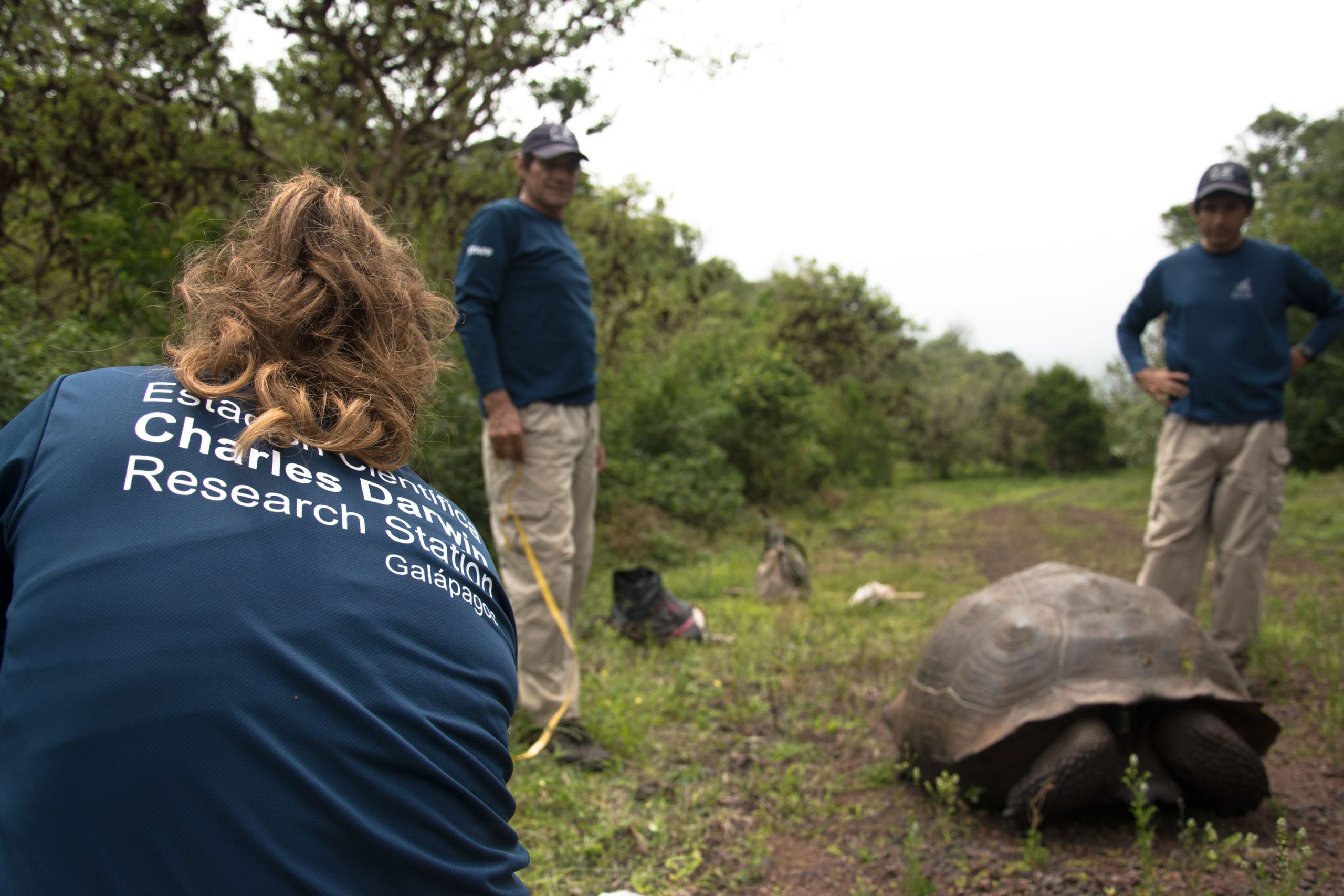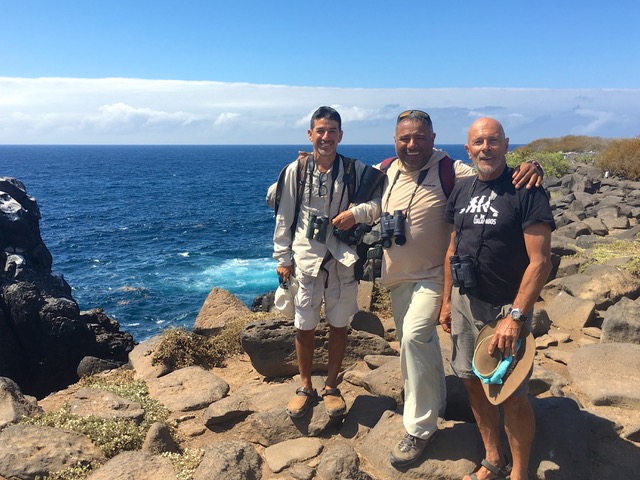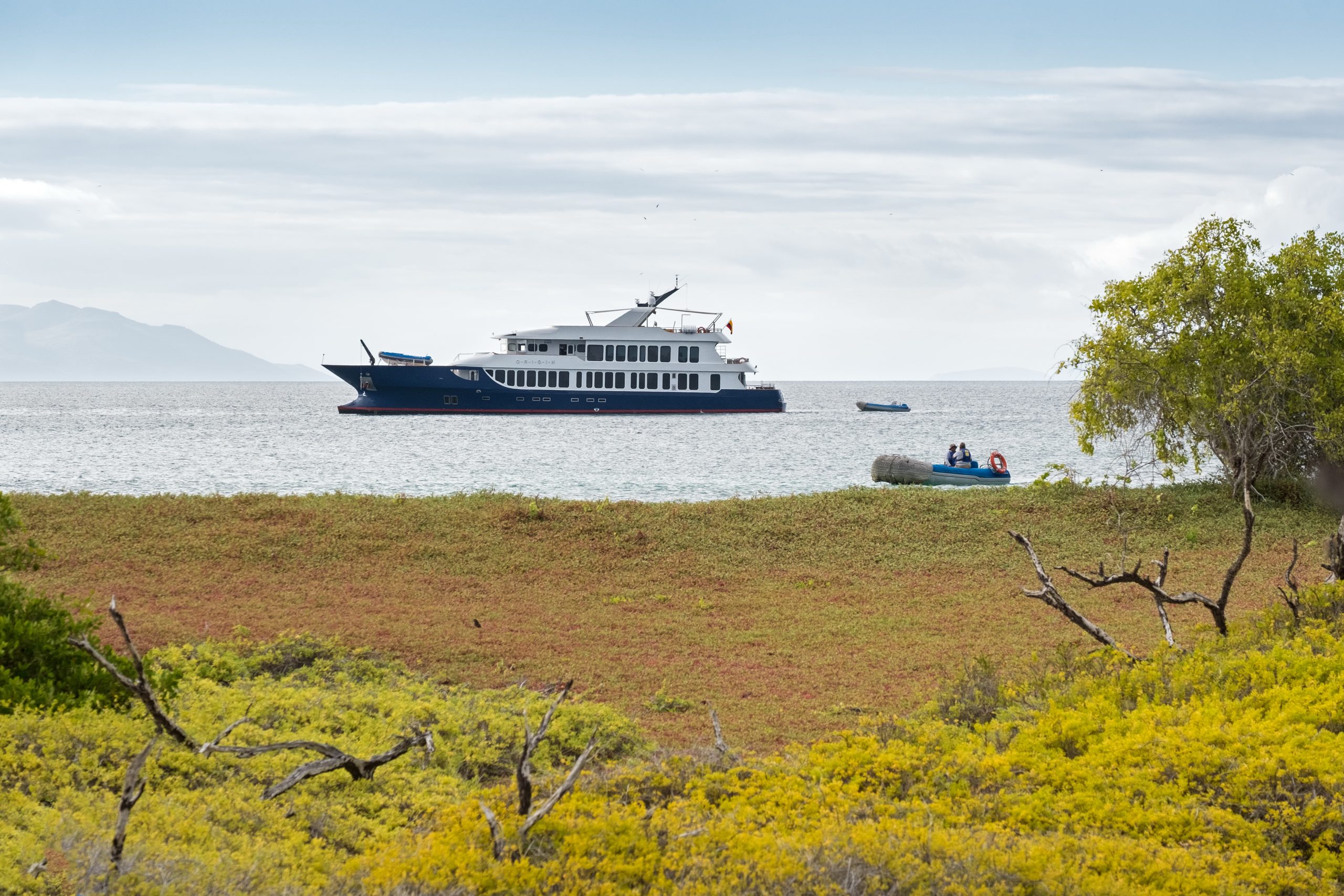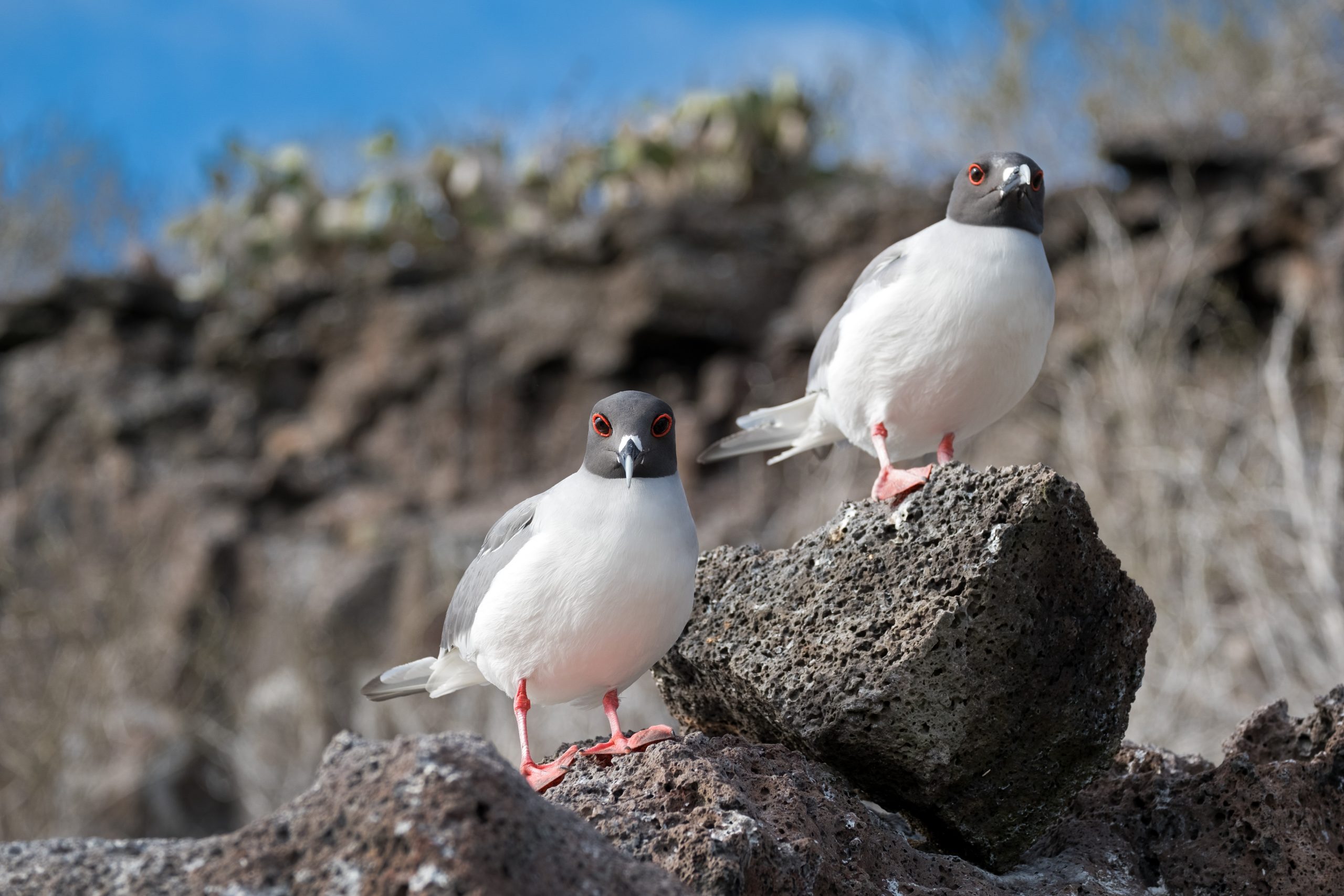Travel’s recovery from the pandemic is now well underway. Whilst things are inevitably opening up in some regions faster than others, in most places countries are slowly lifting restrictions for visitors allowing people to once more get out and explore the world.
The Galapagos Islands are no different – as of July 1st, the entire adult population of the Galapagos is fully vaccinated, and a vaccination card proving you are fully jabbed is accepted for foreign travelers to visit once again.
However, as people dig out their passports from the back of dusty drawers and bring their suitcases back up from the basement, it is worth taking a moment to pause, and think.

We at Ecoventura are very aware that the tourism industry cannot carry on as it had before the pandemic. Problems we were facing then still exist; unregulated tourism, biodiversity loss, trail erosion, plastic pollution, the climate crisis – to name a few.
Now that the moment is finally here, we must continue to deliver in the most responsible way and focus on the long-term sustainability of each destination – particularly when that destination is somewhere as pristine and magical as the Galapagos.
The Islands are, after all, an ecological paradise, with a host of wonderful species living above and below the waves, many of which exclusively inhabit our archipelago.
As an operator of boutique luxury vessels in these islands, we recognize that we have a fundamental role to play in supporting the conservation of this incredible destination. The last year has heightened our gratitude for the beauty of nature and furthered our mission to honor and protect the islands we visit.
Through our 30 year presence in the Galapagos, we have been proud to support a large number of community initiatives, in partnership with various organizations; Ecology Project International on week-long mentoring cruises, Island Conservation, and the Charles Darwin Foundation to name but a few.

While our involvement in this work continues, our focus more recently has also been to help the island recover from the global pause in tourism caused by the pandemic. After all, in a region where 8 out of 10 jobs are related to tourism, the downturn hit the local community particularly hard; in the first two months of the pandemic alone, the islands’ economy lost almost a quarter of its annual income.
So, in addition to promoting travel to the islands to help in this essential recovery, during the pandemic Ecoventura endorsed several great fundraising campaigns helping to support the community and get through such a difficult time.
A fundraising campaign designed to raise money for the Tomas de Berlanga school on Santa Cruz Island has raised over $25,000 – the majority of the children who attend do so with scholarship support, and the school is now at risk of closure as its funding has dried up.
Another campaign, for Galapagos guides – many of whom are freelance and saw their incomes disappear overnight when restrictions were put in place – has so far reached $15,000, helping support the passionate experts that contribute so much to creating such memorable and amazing trips.

More recently, Ecoventura, along with eight other tourism providers, sponsored the logistical costs for delivering medical supplies and the equipment necessary to carry out the vaccination program. They joined forces to cover flights, food, and accommodation for medical professionals to travel from mainland Ecuador. The prompt vaccination of the inhabitants has been critical in allowing the region to open its arms to tourists once again, and we’re proud to have done our bit in helping to make this possible.
Supporting community initiatives and conservation
Ecoventura has a history of supporting conservation efforts across the islands, and one of the organizations we are particularly committed to helping is the Charles Darwin Foundation — a non-profit group dedicated to conducting scientific research in the Galapagos. Through joining forces with the CDF in 2017, we have helped to protect the ecosystem and the animals that depend on it, raising over $270,000 for the Galapagos Biodiversity and Education for Sustainability Fund (the GBESF) that we set up in collaboration with the CDF and the Galapagos National Park Directorate.

The fund supports marine and terrestrial conservation and education efforts run by the CDF, as well as providing patrolling and surveillance, buy scientific equipment and run educational projects and conservation camps for scientists and students – an incredibly worthy cause and one we are proud to play an active role in supporting. Ecoventura was awarded a Platinum badge in honor of our commitment to corporate social responsibility and the efforts we give back to science and conservation in the Galapagos.
Reducing carbon emissions and lowering our footprint
As we enter a new era of travel, guests are more aware of the impact of their choices than ever before and are overwhelmingly making more conscious choices, whether by choosing to travel more slowly with fewer stops and longer duration trips, actively seeking out more sustainable hotels, lodges or vessels, packing more sustainably or picking destinations that aren’t over-burdened with visitors.
A decade ago, congestion was sadly common at the more popular visitor sites across the Galapagos islands. To remedy this, the Galapagos National Park carried out studies to determine the sustainable maximum capacity of different locations, and mandated each vessel to revise their itineraries from 8 to 15 days to better distribute and manage numbers in different parts of the park.
Ecoventura embraced the idea and quickly received approval for their first choice of two unique routes; Beaches & Bays and Volcanic Wonders. To this day, we encourage our guests to stay for longer by only offering week-long voyages – there are no 3, 4 or 5 night cruise options available on our yachts. This ensures a lower carbon impact per passenger by reducing the number of flights and changeovers between voyages, and helps to control the total visitor numbers to the region.
At the same time, it encourages a slower, more conscious way of traveling – more time to unwind, relax and really get to experience all that these stunning islands have to offer.

We strongly believe tourism providers should measure success not only by how many people book a particular destination, but in what condition those visitors left that destination. We must go beyond a “leave no trace” mantra, but actively improve the place that we visit. Spending time on our expedition vessels takes the pressure off the islands themselves, whilst greatly contributing to the conservation efforts that we support.
And on top of that, we have implemented various sustainability measures to minimize our impact. Single-use plastic is out, refillable water bottles are in. Biodegradable soaps and shampoos are provided in refillable containers, whilst our ecological dual-flush toilets and an advanced water treatment system that prevents untreated greywater or blackwater from being disposed into the ocean help to protect the waters around the islands. In addition, we have introduced some of our own suggestions to help our guests tread lighter.
Protecting the wildlife and environment
In the Galapagos, all visitors must be accompanied on excursions by well-trained naturalist guides who are licensed by the Galapagos National Park. As well as being passionate about the Islands, our guides have a deep knowledge of the environments and locations, as well as the threats to wildlife and conservation efforts of the species that live there. During the welcome briefing, they will run you through the rules and regs that must be followed when stepping foot in the national park, and share other important information and safety guidance.
With the lowest guests-to-guide ratio of all the vessels sailing the Galapagos, our guests go ashore in two groups of no more than ten people per naturalist.
Each group is staggered and takes different routes to reduce the impact on the vegetation. Guests must stay with their guide and remain on marked trails to protect the wildlife. Breeding sites are avoided for obvious reasons, and whilst the Galapagos are remarkable for how close you can get to the wildlife, we do ask that a distance of 6 feet is maintained to avoid disturbing their natural behavior.

Our guides will ensure that our guests follow the park rules, which also include the following:
– Be careful not to transport any live material or sand from one Island to the next.
– Do not buy any products or souvenirs made from banned substances, including black coral, shells, lava rock, animal parts, or any native wood or vegetation.
– Do not disturb or remove any native plant, rock or animal on land or in the water.
– Do not touch, pet or feed the animals, or startle or chase any animal from its nesting place.
– Do not use flash photography when taking photos of wildlife.
In addition to the park rules, we have introduced our own recommendations to help our guests reduce their impact on the natural environment. Ecoventura suggests their guests avoid wearing brightly colored clothing that attracts insects, refrain from using selfie sticks, and use bio-degradable sunscreen that doesn’t damage coral and other marine life. Any packaging materials should be taken back and disposed of on the mainland to avoid leaving trash in the Galapagos.




